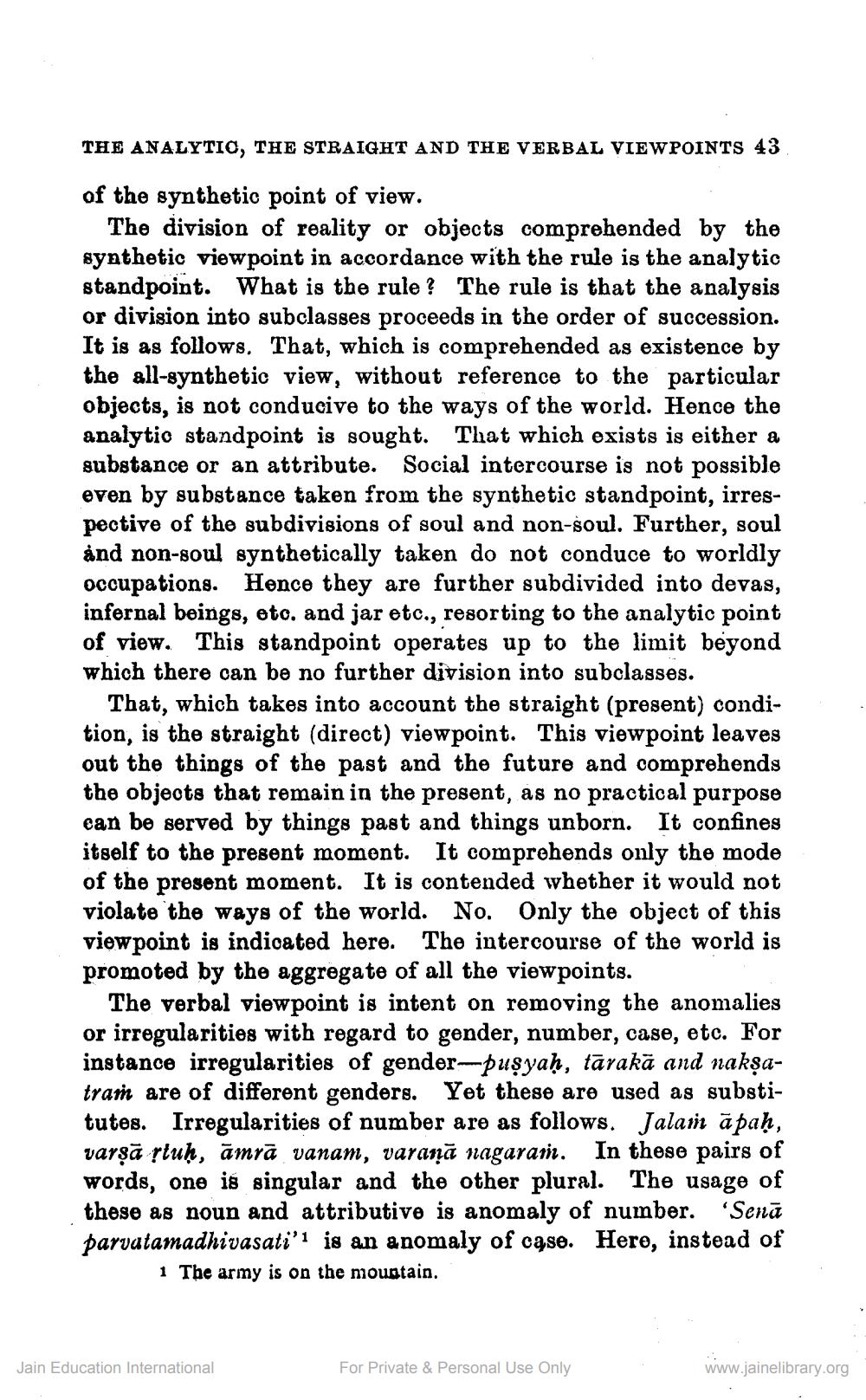________________
THE ANALYTIC, THE STRAIGHT AND THE VERBAL VIEWPOINTS 43
of the synthetic point of view.
The division of reality or objects comprehended by the synthetic viewpoint in accordance with the rule is the analytic standpoint. What is the rule? The rule is that the analysis or division into subclasses proceeds in the order of succession. It is as follows. That, which is comprehended as existence by the all-synthetic view, without reference to the particular objects, is not conducive to the ways of the world. Hence the analytic standpoint is sought. That which exists is either a substance or an attribute. Social intercourse is not possible even by substance taken from the synthetic standpoint, irrespective of the subdivisions of soul and non-soul. Further, soul and non-soul synthetically taken do not conduce to worldly occupations. Hence they are further subdivided into devas, infernal beings, oto. and jar etc., resorting to the analytic point of view. This standpoint operates up to the limit beyond which there can be no further division into subclasses.
That, which takes into account the straight (present) condition, is the straight (direct) viewpoint. This viewpoint leaves out the things of the past and the future and comprehends the objeots that remain in the present, as no practical purpose can be served by things past and things unborn. It confines itself to the present moment. It comprehends only the mode of the present moment. It is contended whether it would not violate the ways of the world. No. Only the object of this viewpoint is indicated here. The intercourse of the world is promoted by the aggregate of all the viewpoints.
The verbal viewpoint is intent on removing the anomalies or irregularities with regard to gender, number, case, etc. For instance irregularities of gender-puşyaḥ, tārakā and nakşatram are of different genders. Yet these are used as substitutes. Irregularities of number are as follows. Jaları āpaḥ, varşā rtuḥ, āmrā vanam, varaņā nagarar. In these pairs of words, one is singular and the other plural. The usage of these as noun and attributive is anomaly of number. "Senā parvatamadhivasati'i is an anomaly of case. Here, instead of
1 The army is on the mountain.
Jain Education International
For Private & Personal Use Only
www.jainelibrary.org




